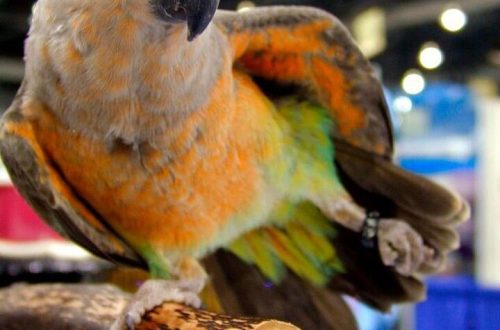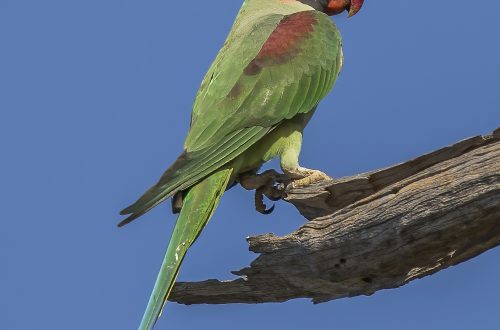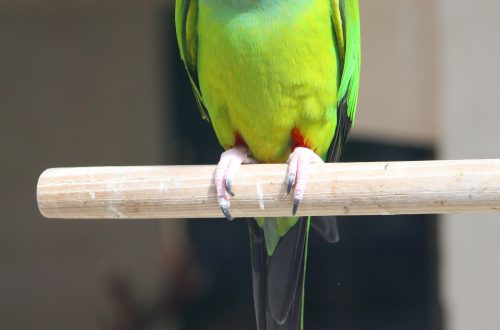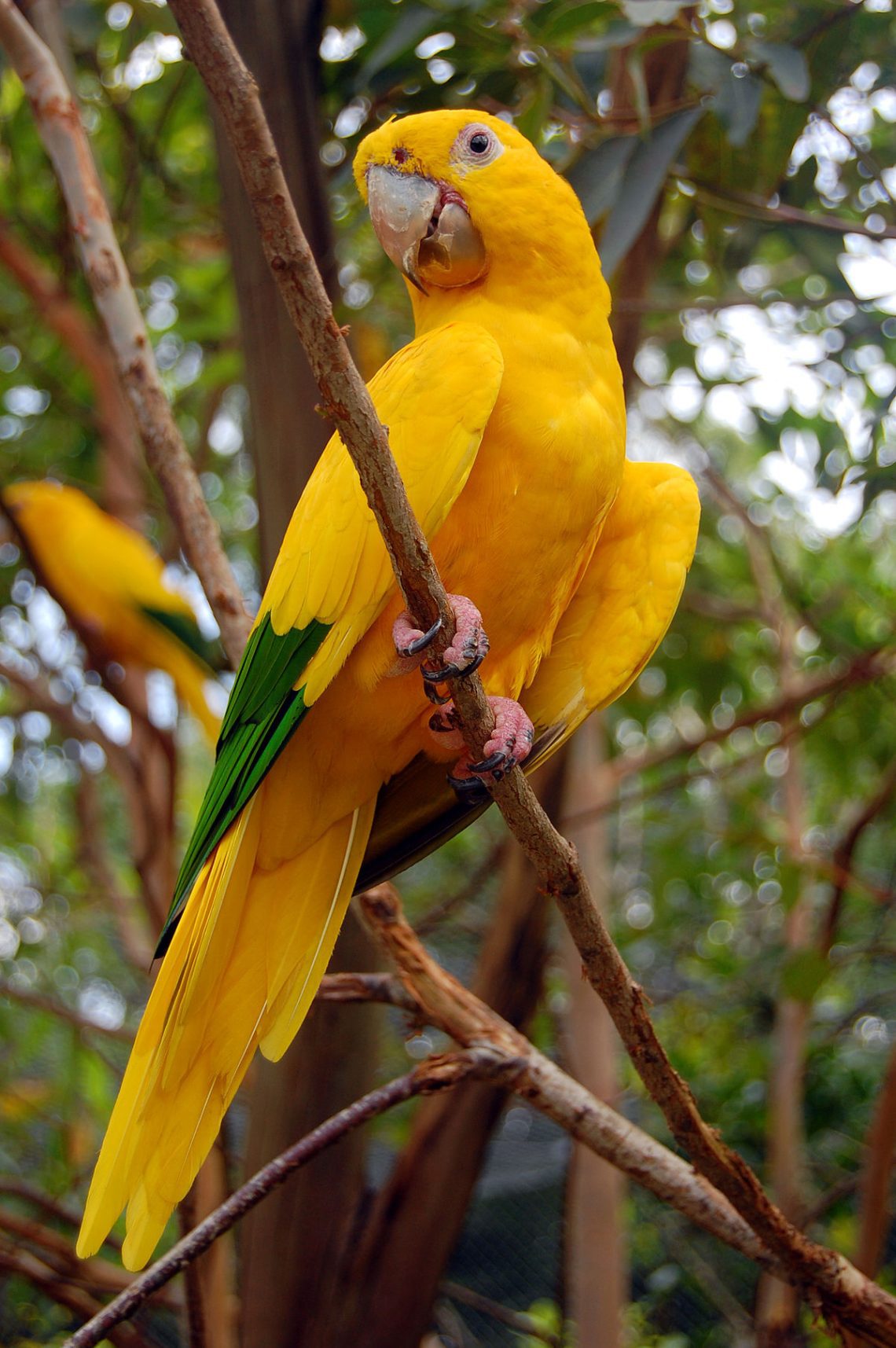
Golden Aratinga
Contents
Golden Aratinga (Guaruba guarouba)
Order | Parrots |
family | Parrots |
Race | Golden Aratings |
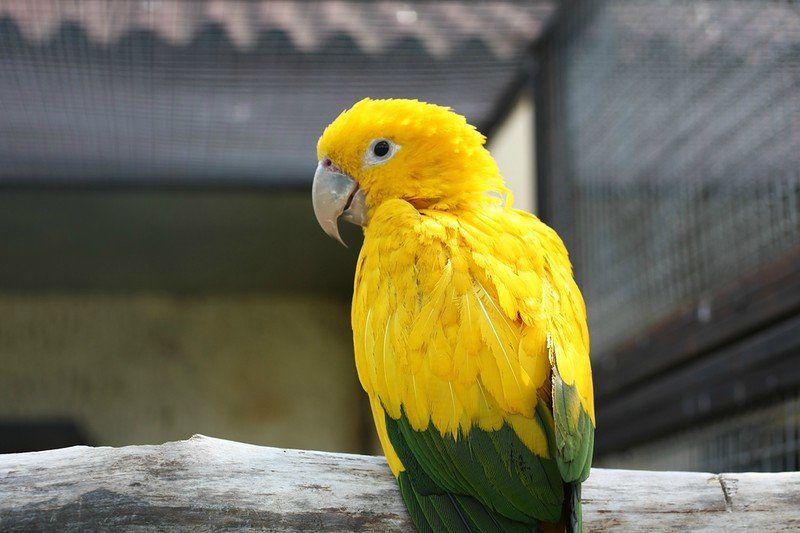

Appearance of the golden aratinga
The Golden Aratinga is a long-tailed medium parrot with a body length of about 34 cm and a weight of up to 270 grams. Birds of both sexes are colored the same. The main color of the body is bright yellow, only half of the wing is painted in grassy green. The tail is stepped, yellow. There is a light-colored periorbital ring without feathers. The beak is light, powerful. Paws are powerful, gray-pink. The eyes are brown.
Life expectancy with proper care up to 30 years.
Habitat and life in nature golden aratinga
The world population of golden aratingas is 10.000 – 20.000 individuals. In the wild, golden aratingas live in the northeast of Brazil and are endangered. The main cause of extinction was the destruction of natural habitats. Golden aratingas live in lowland rainforests. They usually keep near the thickets of Brazil nuts, along the banks of rivers, at an altitude of about 500 m above sea level.
As a rule, golden aratingas are found in small flocks of up to 30 individuals. They are quite noisy, preferring to stay in the upper tier of trees. They often roam. Golden aratingas often spend the night in hollows, choosing a new spot each night.
In nature, golden aratingas feed on fruits, seeds, nuts, and buds. Sometimes they visit agricultural lands.
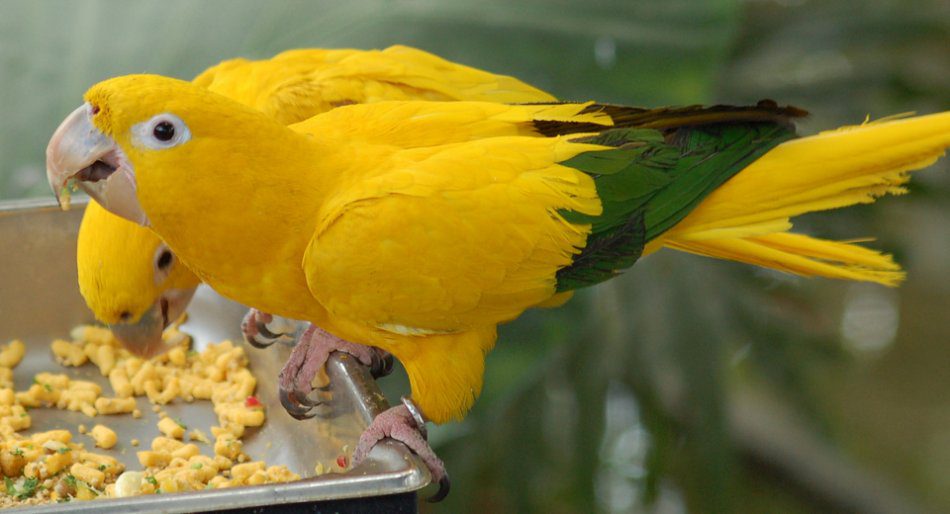



In the photo: golden aratinga. Photo source: https://dic.academic.ru
Reproduction of golden aratingas
The nesting season is from December to April. They choose rather deep hollows for nesting and aggressively guard their territory. Usually the first successful reproduction in them occurs by 5 – 6 years. The clutch usually contains 2 to 4 eggs. Incubation lasts about 26 days. The chicks leave the nest at about 10 weeks old. The peculiarity of the reproduction of this species is that in the wild, nannies of their own species help them to raise chicks, and also protect nesting from toucans and other birds.





